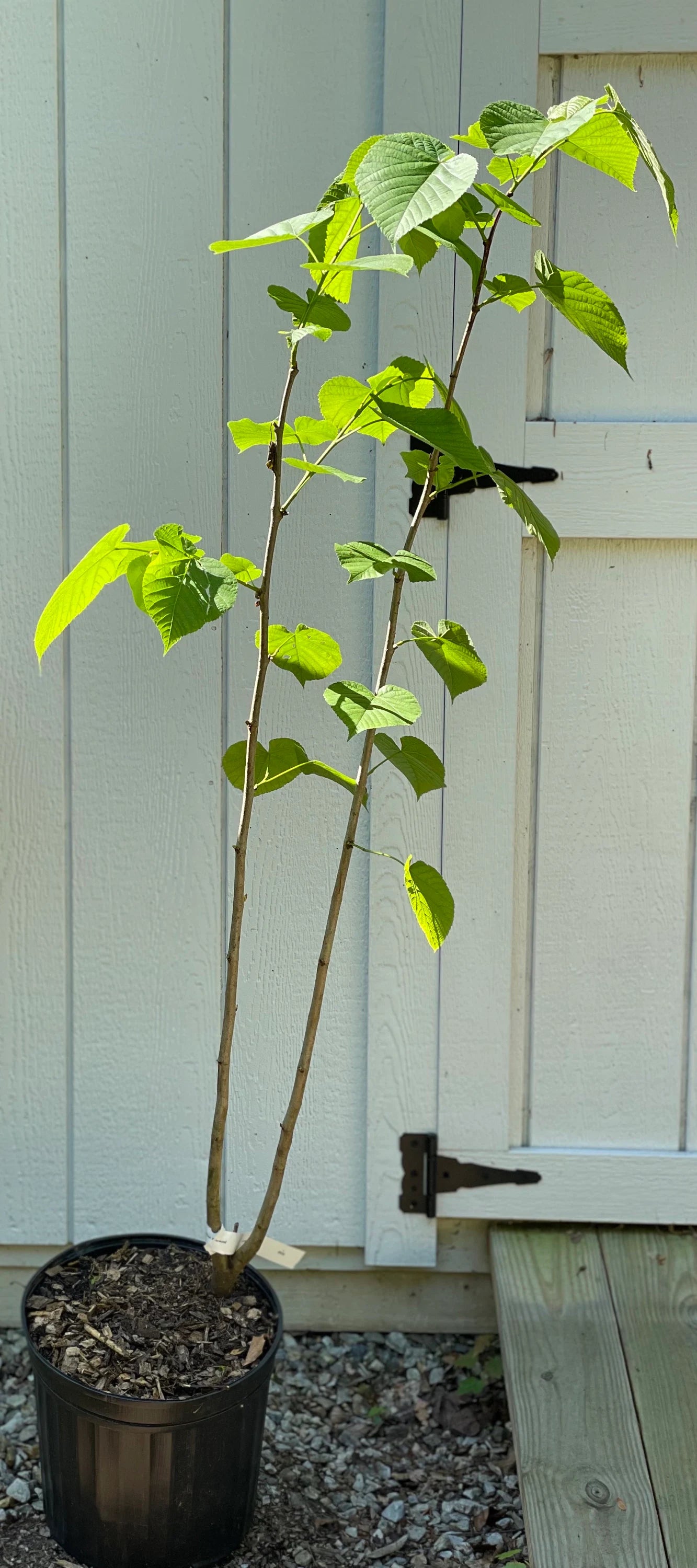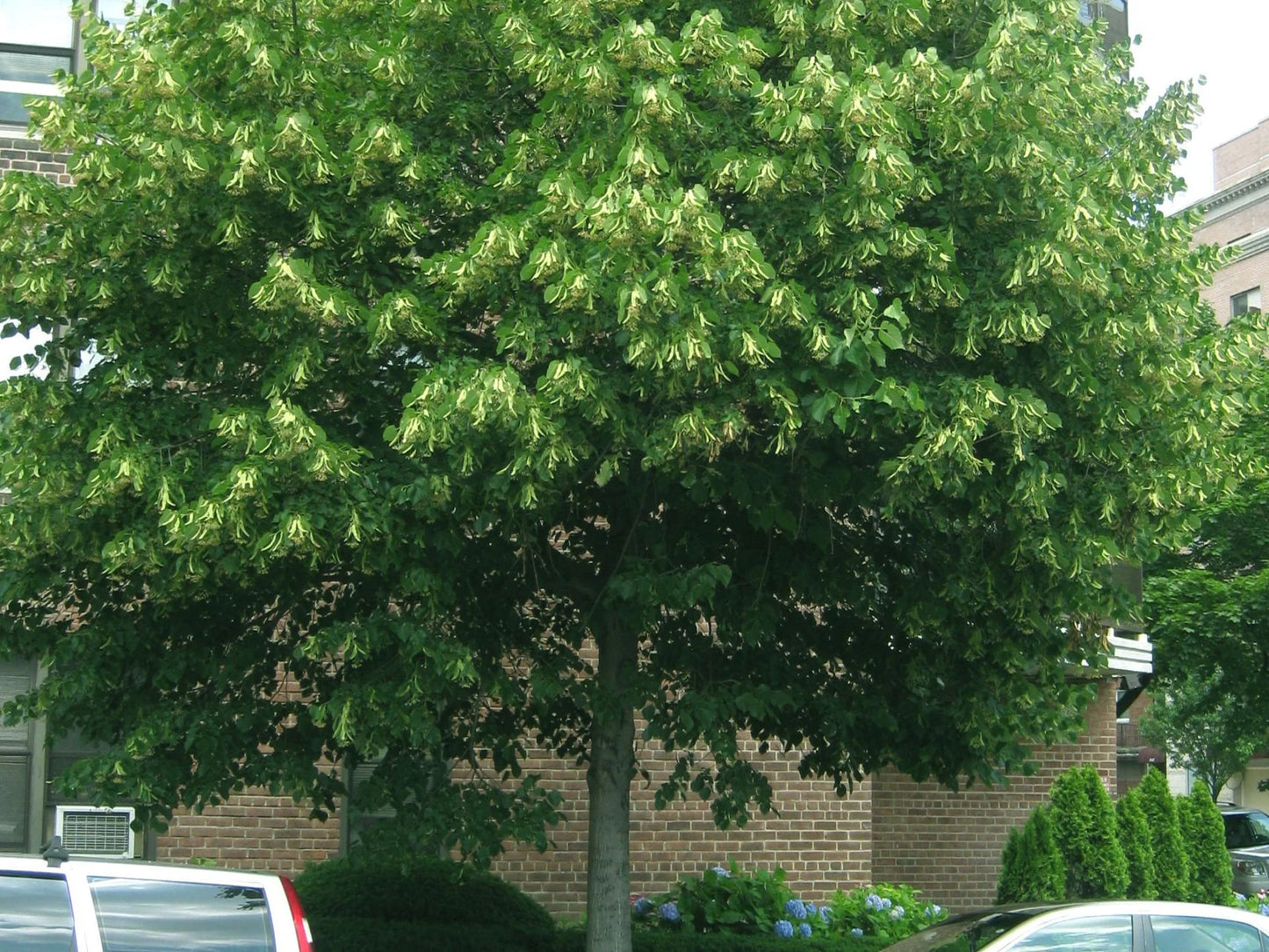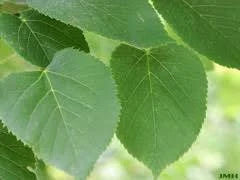Eastwoods Organics
American Basswood ( Tilia Americana )
American Basswood ( Tilia Americana )
Couldn't load pickup availability
DISCLAIMER - WE ADVISE THAT THE BEST TIME TO SHIP IS FROM OCTOBER TO MAY. SHIPPING OUTSIDE OF THAT TIME PERIOD CAN BE EXTREMELY STRESSFUL TO ANY LIVING PLANT. ON MOST OCCASIONS, PLANTS WILL SURVIVE THAT STRESS AND GO ON TO THRIVE. HOWEVER, OCCASIONALLY SOME WILL PERISH. WE DO NOT GUARANTEE TREES THAT WE DON’T PLANT, SO ONLINE SALES ARE AS IS. WE DO NOT SHIP TREES IN CONTAINERS/POTS AS TO AVOID EXCESSIVE SHIPPING CHARGES. WE SECURE TREE ROOTS IN LARGE PLASTIC BAGS PACKED WITH WET MEDIUM. IF YOU WISH TO SPECIFY A SHIP DATE, PLEASE INCLUDE A NOTE WITH YOUR ORDER. OTHER WISE IT WILL SHIP AS SOON AS WERE ABLE. WE DO NOT ACCEPT CANCELLATIONS ONCE AN ORDER IS PLACED. PLEASE KNOW WHAT YOU ARE ORDERING. SHIPPING TO ALASKA AND HAWAII IS EXTRA. OUR SHIPPING TIMEFRAME IS AN ESTIMATE NOT A GUARANTEE AS WE ARE AFFECTED BY WEATHER EVENTS, STAFFING ETC. American Basswood trees ready for sale. These are roughly 3-4' high. The American basswood is a medium-sized to large deciduous tree reaching a height of 18 to 37 m (60 to 120 ft) exceptionally 39 m (128 ft) with a trunk diameter of 1–1.5 m (3–5 ft) at maturity. It grows faster than many North American hardwoods, often twice the annual growth rate of American beech and many birch species. Life expectancy is around 200 years, with flowering and seeding generally occurring between 15 and 100 years, though occasionally seed production may start as early as 8 years. The crown is domed, the branches spreading, often pendulous. The bark is gray to light brown, with narrow, well defined fissures. The roots are large, deep, and spreading. The twigs are smooth, reddish-green, becoming light gray in their second year, finally dark brown or brownish gray, marked with dark wart-like excrescences. The winter buds are stout, ovate-acute, smooth, deep red, with two bud scales visible. The leaves are simple, alternately arranged, ovate to cordate, asymmetrical, unequal at the base (the side nearest the branch the largest), 10–15 cm (4–6 in) (can grow up to 25 cm or 10 in) long and broad, with a long, slender petiole, a coarsely serrated margin and an acuminate apex. Bean noted that occasionally, enormous leaves measuring 38 cm or 15 in long by 25 cm or 10 in wide appear on thick, succulent shoots.[5] They open from the bud conduplicate, pale green, downy; when full grown are dark green, smooth, shining above, paler beneath, with tufts of rusty brown hairs in the axils of the primary veins; the small stipules fall soon after leaf opening. The fall color is yellow-green to yellow. Both the twigs and leaves contain mucilaginous sap. The flowers are small, fragrant, yellowish-white, 10–14 mm (13⁄32–9⁄16 inch) in diameter, arranged in drooping, cymose clusters of 6–20 with a whitish-green leaf-like bract attached for half its length at the base of the cyme. They are perfect, regular, with five sepals and petals, numerous stamens, and a five-celled superior ovary. The leaves emerge in mid-spring, but the flowers require day lengths of approximately 14 hours and 30 minutes to form, hence T. americana's range is limited to north of the 35th parallel. Time of flowering varies by several weeks depending on the latitude; early May in Canada and early June in the extreme southern extent. Leaf drop in fall occurs between early and late October depending on the latitude. The flowers are fragrant and insect-pollinated. The fruit is a small, globose, downy, hard and dry cream-colored nutlet with a diameter of 8–10 mm. This will grow in zones 3-8. Please like us on Facebook at Eastwoods Organics & Nursery in Guilford CT. Thanks for looking
Share





